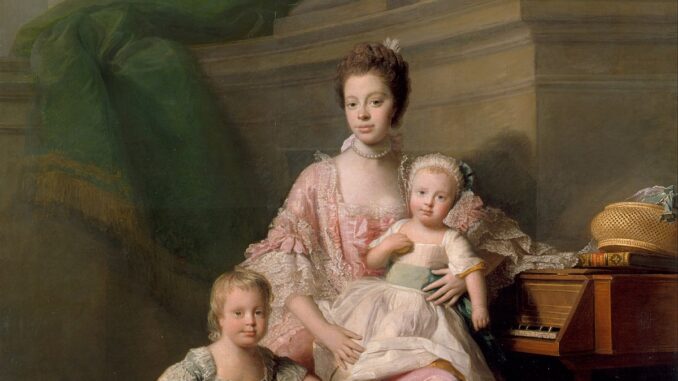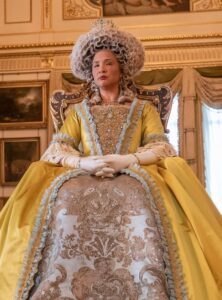
Queen Charlotte wasn’t Black and George III wasn’t mad: The half-truths of the hit series ‘Bridgerton’
This week marks 204 years since the death of the British monarch, who suffered from porphyria, a disease unknown to medicine at the time. The prequel to ‘Bridgerton,’ far from an accurate portrayal of history, nevertheless faithfully narrates the illness of the king popularly known as ‘Farmer George’
On the cold morning of January 29, 1820, King George III, monarch of the United Kingdom, took his last breath at the age of 81 at Windsor Castle. The day marks the end of one of the longest reigns in the history of the British monarchy, with the blessings of his descendants: Queen Victoria (1819-1901) and the recently deceased Elizabeth II (1926-2022).
George was the son of Frederick Louis, Prince of Wales, and his wife, Princess Augusta of Saxe-Gotha. He hailed from the House of Hanover, the German dynasty that reigned in Great Britain (later, in 1801, the United Kingdom) beginning in 1714, after Queen Anne I died without descendants, leaving the thrown to Queen Victoria of Hanover and her cousin, Albert of Saxe-Coburg-Gotha. In the midst of World War I, and as a result of growing anti-German sentiment in the United Kingdom, the Hanovers decided to adopt the Windsor surname. Curiously, George III was the first of this dynasty to be born in British territory, and the first whose mother tongue was not German, but English.
The life of George III is fascinating from the point of view of history, and especially from the perspective of the history of medicine, as the king is believed to have suffered from porphyria, a hemophilia that he inherited and that was passed down his bloodline, ultimately affecting even the Spanish Royal Family: several of the children of King Alfonso XIII and Queen Victoria Eugenia, popularly known as Ena, were afflicted with the disease. Ena was the granddaughter of Queen Victoria of England, known as the “grandmother of Europe” because she had so many descendants that today it is rare to find a member of a European dynasty who is not related to her.

Almost nothing in George III’s life happened as it seemed it would. He was born premature, and was baptized immediately after birth under the assumption that he would die within hours. He was the second son, but the first male and thus the future heir after his father, Frederick Louis, ascended the throne. But due to a bad relationship between the reigning monarch — George III’s grandfather — and George II, the future king’s father was banned in 1737. The bad relationship most likely stemmed from the fact that the father and son had been separated when the little boy was just seven years old, leaving Frederick Louis in the care of the court in Germany. His parents went to live in England when they became heirs to the throne on the occasion of the accession of George I. Frederick did not see his parents again until he was an adult, finally arriving to England, but as a complete stranger to his own family. family.
Despite his reputation as a womanizer and a spendthrift, he finally found stability after marrying Augusta of Saxony, with whom he would father nine children, George III being the second born, but the first male, and thus heir to the throne. At the age of 44 he died before his own father, so he never wore the crown himself, and passed the title of Prince of Wales to his son, the future George III, who became king the day his grandfather, George II, died, on October 25, 1760.
A newly crowned king with no descendants — not the most comfortable position to occupy in a reigning royal house, but one that will resolve a year later following an exhaustive search for eligible European princesses. The chosen future queen was Charlotte, protagonist of Queen Charlotte: A Bridgerton Story, the prequel to the hit Netflix show Bridgerton, in which the monarch is portrayed as a Black woman — the first in a series of creative licenses that, while permitted by fiction , do not, of course, accurately reflect the real historical figure herself. In portraits and descriptions from the time, Queen Charlotte is consistently represented as white. The historian John Watikings described the queen as “rather small, but her shape fine, and carriage graceful; her hands and neck extremely well turned; her hair auburn; her face is round and fair; the eyes of light blue face round and white, her eyes light blue…” Although at the time, marriages were arranged, it was customary to send portraits of prospective wives so that the groom could get a sense of the possible candidates and make his choice. George received two portraits of Charlotte that are preserved in the Royal Collection of the British Crown, in which she is depicted as having pale skin and blue eyes. There is no historically valid reason that she might be portrayed as Black.
